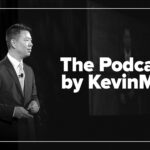I’ve witnessed what’s possible when we rethink pain management. By implementing a multimodal assessment approach at my hospital, I achieved a 50 percent reduction in inpatient opioid use, measured in morphine milligram equivalents (MMEs). The Numeric Pain Scale (NPS)—that 0-10 score we’ve leaned on too much—drives overuse when it’s the only guide, and with the U.S. consuming 80 percent of the world’s opioids as just 4.4 percent of its population, that’s a problem we can’t ignore. My experience shows we can curb inpatient harm and reshape outpatient expectations. It’s time for policy to make this the norm.
The NPS looks simple: Patients rate pain, we dose opioids. But it’s shaky solo. At my facility, I paired it with objective tools—respiratory rate, sedation scores, functional ability, drug history—and mixed in non-opioid options like nerve blocks and NSAIDs. The result? Inpatient MMEs fell 50 percent, pain relief held steady. Studies echo this: Multimodal approaches cut opioid use by 30–50 percent. NPS alone pushes 20–30 percent more opioids than needed. The Joint Commission’s 2012 Alert #49 tied 47 percent of opioid adverse events from 2004–2011 to dosing errors—NPS misfires. Nationally, 7,407 inpatient overdose discharges in 2022 (NHCS) suggest hundreds—maybe 1,481—could’ve been avoided. My 50 percent drop proves it’s doable.
The inpatient impact was clear: fewer overdoses, less morbidity. A 2014 study saw five overdoses in six months among 8,000+ admissions from sloppy pain calls—scaled to 36 million U.S. hospitalizations, that’s 150–200 yearly. My hospital’s approach could’ve cut our share of that in half. But the outpatient shift was bigger. NPS sets patients up to expect zero pain, opioids as the answer. After my multimodal change, they left OK with a 3/10 using varied tools—not just pills. A 2018 study found 6–10 percent of surgical patients (8,000–13,000 of 135,000) hooked post-discharge from inpatient overuse. My patients dodged that, showing realistic expectations work.
Our 80 percent global opioid share—99 percent hydrocodone, 83 percent oxycodone (STAT News, 2019)—demands action. Europe’s multimodal edge, like Germany’s 1/10th per capita use, lit the way. My hospital’s 50 percent inpatient drop matches that potential. So here’s my push: Mandate multimodal pain assessment nationwide. Link NPS to objective metrics and non-opioid options, aiming for a 25 percent inpatient opioid cut in five years—my 50 percent shows it’s within reach. Train providers and patients for functional pain goals, trimming outpatient dependence by 10–20 percent. This builds on The Joint Commission’s 2018 standards but makes them real.
I made it happen—halved inpatient opioids at my hospital, reduced risks, reframed pain. Policy needs to follow. We’d save lives, curb addiction, and chip away at that 80 percent stat, one facility at a time.
Myles Gart is an anesthesiologist.




















![Catching type 1 diabetes before it becomes life-threatening [PODCAST]](https://kevinmd.com/wp-content/uploads/Design-2-190x100.jpg)


![Treating your bone density like a retirement account [PODCAST]](https://kevinmd.com/wp-content/uploads/Design-1-190x100.jpg)
